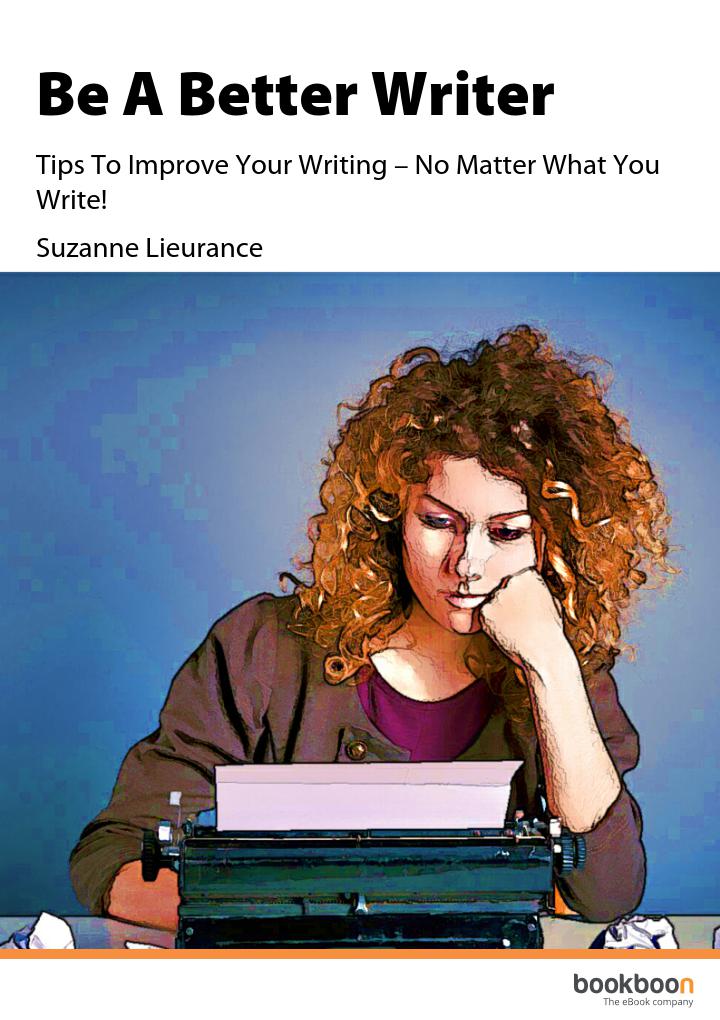8 proven writing tips that can help you write amazing texts

You may not be a professional writer. Yet no matter what type of profession you are in, chances are you will need to write something on a professional level at one time or another. Examples include: articles, web content, reports, emails, cover letters and resumes.
In this article freelance writer, speaker, and writing coach Suzanne Lieurance provides you with general writing tips you should consider no matter what type of writing you need to do. Seize this opportunity to improve your overall writing skills.
Tip #1: Know your audience
For any type of writing, from novels to business reports, the first thing you need to do is identify your audience; the people who will read your work. The audience you’re writing for will determine the tone, style, and even the subject matter of your material. Before you start to write, make a few notes about your intended audience. This will help you make sure that what you write will appeal to this audience and will fit their needs and wants.
Tip #2: Know your purpose for writing
You should also identify your purpose for writing for your audience. If you identify your purpose upfront, you’ll be able to keep your writing tightly focused on that purpose. You’ll also be able to guide your readers to taking any action you might want them to take. If you’re writing a sales letter, for example, your purpose is to persuade readers to buy a specific product or service. Make a few notes as to the purpose of whatever it is you’re going to write. You’ll be more likely to fulfill this purpose if you take time to become very aware of it before you start writing.
Tip #3: Decide on structure
As you’re planning your writing project, decide on the best structure for it. That is, create a way to best organize the information you will be writing about. If you create a structure for your project as you’re planning your writing, this structure will provide you with a blueprint for your project. With the blueprint in place, all you’ll need to do to complete the project when you sit down to write is follow the blueprint.
A good nonfiction article, for example, usually starts with a catchy title, followed by a “hook” sentence (called the lead), which is part of an introductory paragraph that pulls in the reader. This paragraph is followed by the body of the article, which covers the main points of the piece, and the article ends with a concluding paragraph.
If you’re unsure as to how you should structure the material you need to write, study something similar. Make note of how it was structured. The same structure might work well for your material.
Tip #4: Write simply
For the most part, the best writing is easy to read and easy to understand. Try to write simply. Avoid obscure vocabulary in most of your writing. Only use technical jargon when you have first identified your audience, so you know they will understand it without extensive explanations. Vary your sentence length. Use many short sentences with a few longer sentences mixed in each paragraph. Be sure your sentences “pull” the reader through the text in a logical order.
Tip #5: Use active voice
Active voice tends to make the writing more engaging and immediate for the reader. To give your material an active voice, stick to basic simple sentence structure for the most part. Start your sentences with a noun or pronoun, followed by a verb and then the object of that verb. Like this:
Active: Mary hit the ball.
Passive: The ball was hit by Mary.
Also use simple verb forms. Instead of writing, “he would sweep the porch every morning,” write, “he swept the porch every morning.”
Avoid beginning too many sentences with a participle phrase (generally a verb that ends in -ing). Here’s an example of a sentence starting with a participle phrase:
Crossing the street and walking toward the park, Mary hurried to her job.
It isn’t incorrect to begin a sentence with a participle phrase. It just slows down the reader (making your material less active) if too many sentences on a page begin this way.
A good exercise to try – particularly if you’re writing fiction – is to go back over a few pages or a chapter of your work, specifically looking for sentences that begin with a participle phrase. Circle each of these phrases, then notice how many are on each page. If you find you have overused participle phrases as the way to begin sentences, change some of the sentences to make them more active.
Like this: Mary crossed the street. She walked toward the park as she hurried to her job.
Tip #6: Use precise verbs
Precise verbs help readers create clearer mental images of the information you are trying to convey. For example, “he stomped over to the coffeepot” is much clearer and less clunky than saying, “he angrily walked over to the coffeepot.” Here are some simple verbs, along with more precise counterparts:
Verb Precise verb
Ran Raced, streaked, charged
Talked Chatted, discussed, debated
Sat Plopped, Flopped, plunked
Tip #7: Use precise nouns
It may take a bit longer to come up with a noun that tells your reader precisely what you are describing. But just like precise verbs, precise nouns make your writing stronger and they enable the reader to get a clearer, more accurate mental image of what you’re trying to convey. For example, a brown ball could mean any number of things, but a meatball gives a very specific image to the reader.
Tip #8: Proof your work
Before you send your work out to your intended readers, proof it one last time. Check for spelling mistakes, punctuation and grammatical errors, and general typos.




